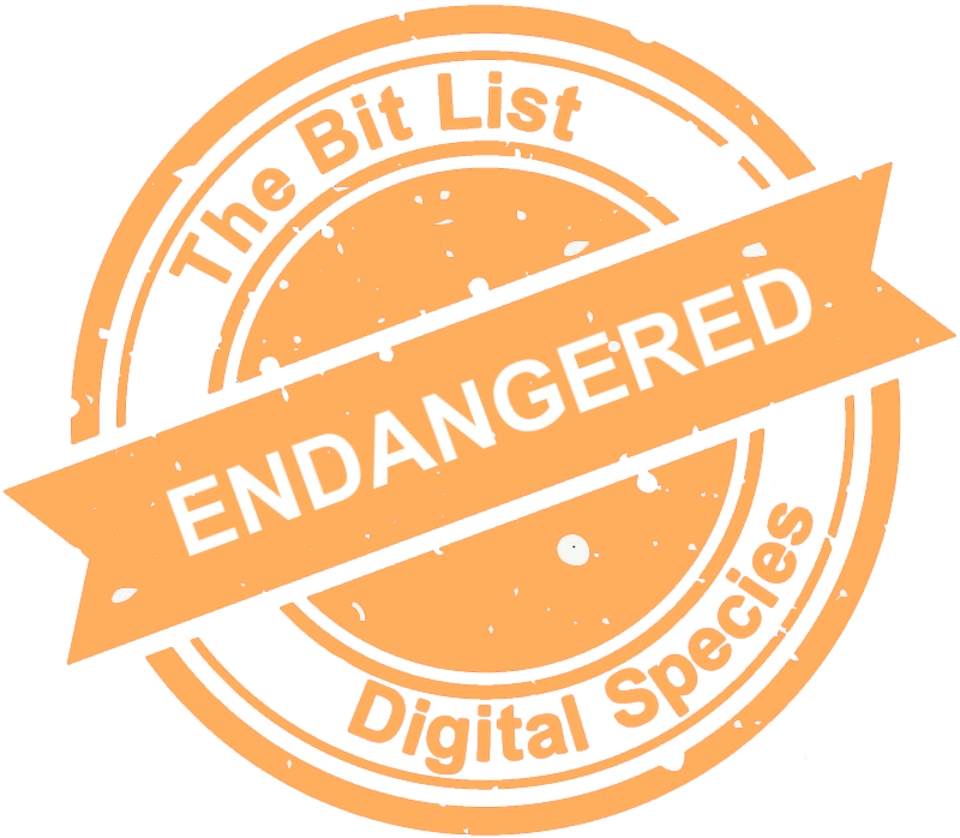Virtual Reality Materials and Experiences
 |
||
|
Virtual reality (VR) refers to a set of technologies which build on existing 3D rendering technologies, with the aim of creating experiences which completely immerse a user in a virtual environment. The related term of Immersive Media (also known by the acronym XR) refers to a set of technologies used to create experiences, which either completely immerse a user in a virtual environment (Virtual Reality), augment the real world with virtual elements (Augmented Reality) or combine elements of the two (Mixed Reality). Key technologies include headsets, tracking systems, real-time 3D software and 360 video. |
||
|
Digital Species: Media Art |
Trend in 2023:
|
Consensus Decision |
|
Added to List: 2021 |
Trend in 2024:
|
Previously: Endangered |
|
Imminence of Action Action is recommended within three years, detailed assessment within one year. |
Significance and Impact The loss of tools, data or services within this group would impact on a large group of people and sectors. |
Effort to Preserve | Inevitability It would require a major effort to prevent or reduce losses in this group, including the development of new preservation tools or techniques. |
|
Examples Oculus Rift, VR tours, art installations. |
||
|
‘Critically Endangered’ in the Presence of Aggravating Conditions Lack of skills, commitment or policy from corporate owners; lack of established frameworks and tools; technology is relatively poorly understood in the digital preservation domain; many of the technologies are proprietary; technology is seen as inherently fragile and therefore risky to collect and preserve; emulators do not currently support XR applications; expected to be difficult and costly to migrate, a process itself dependent on access to vulnerable source materials; uncertainty over IPR or the presence of orphaned works. |
||
|
‘Vulnerable’ in the Presence of Good Practice Effective replication; emulation; strong technical documentation; preservation pathway; good descriptive cataloguing; trusted repository. |
||
|
2023 Review This entry was added in 2021. VR technologies are finding use in many sectors, including archaeology, architecture, contemporary art, documentary film, gaming, forensics, science and engineering. While these technologies are not new per se, having experienced a first wave in the 1990s, they have experienced renewed interest recently as a result of a new generation of hardware. There are overlaps with other entries relating to both Media Art and Gaming, but it was added as an entry to emphasize the issues of preservation that pertain to the interconnected set of specific hardware and software components that access to XR experiences is contingent on. VR is challenging to document due to the individual nature of the experience, and components tend to become rapidly obsolete due to a fast rate of technological change as the industry pushes newer, higher fidelity hardware and software. This results in the potential to lose access to XR software applications, as old VR applications can no longer communicate with new XR hardware. The reliance on proprietary software and hardware components, as well as the lack of industry standards, poses a further risk. The 2022 Taskforce agreed that the risks remained on the same basis, with no change to trend. The 2023 Council agreed with the classification of Endangered with overall risks remaining on the same basis as before (‘No change’ to trend). |
||
|
2024 Interim Review These risks remain on the same basis as before, with no significant trend towards even greater or reduced risk (‘No change’ to trend). |
||
|
Additional Comments The current wave of materials made using XR technologies represent a unique point in time for the continued development of the technology and therefore represent a significant piece of computing history. Individual materials/experiences created using XR technologies present their own significance beyond this, which, noted elsewhere in this entry, can be represented in a wide range of sectors. The impacts of the loss of access to virtual reality materials could be widely felt, given their wide-ranging uses across many sectors — most notably collections and archives containing materials accessed using these technologies. Simultaneously there is a risk of a loss of understanding of this technologies' development during the 2010-present period, which is likely to be of historical significance in and of itself. Media artworks are often made with a network of knowledge that can be precarious. Documentation around production processes can be minimal, and hence acting quickly with known processes can gather information before the knowledge and people networks start to disperse. This can mean preservation of production environments and associated workflows can be preserved alongside the media. Case Studies or Examples:
See also:
|
||





































































































































